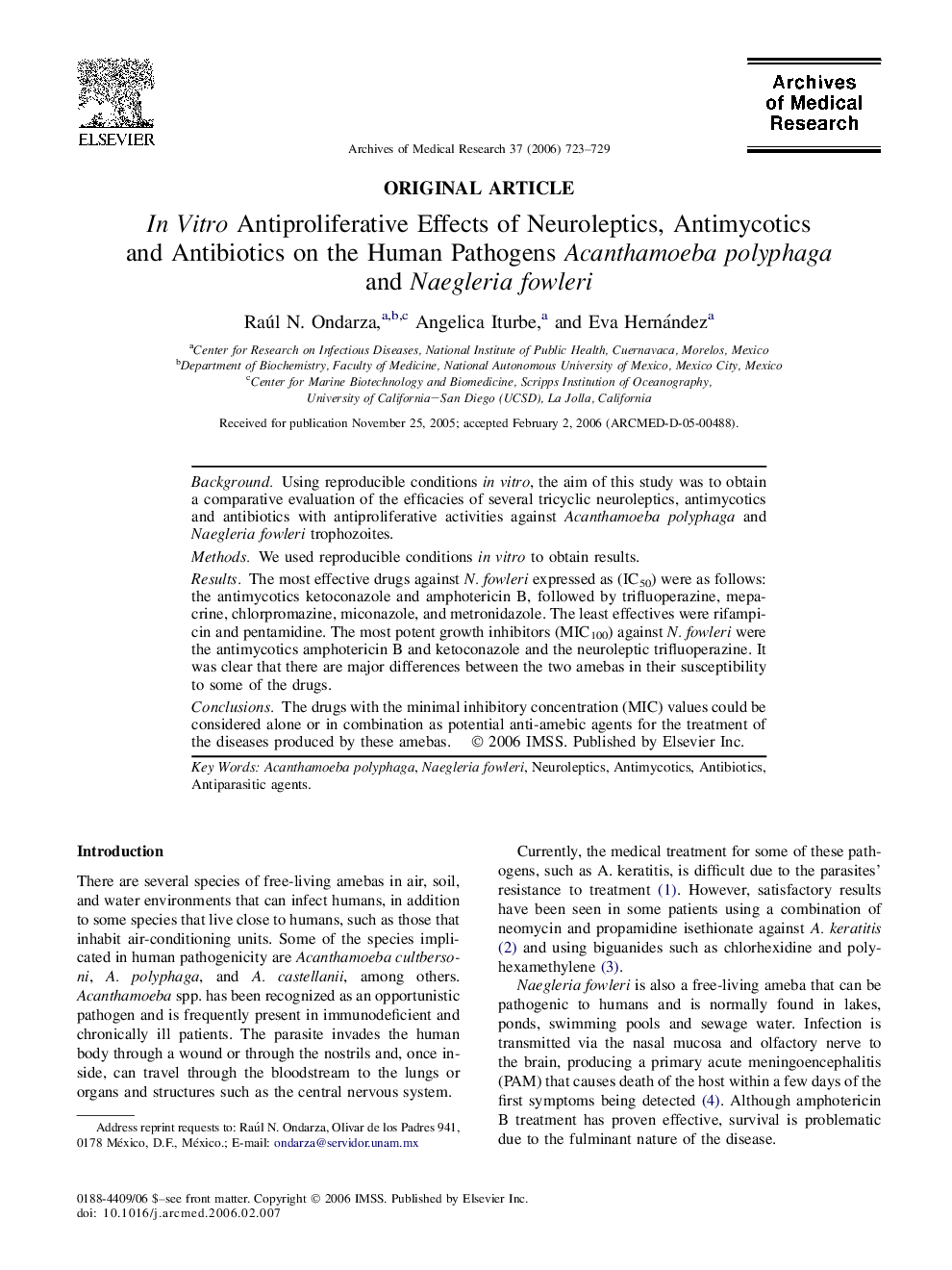| Article ID | Journal | Published Year | Pages | File Type |
|---|---|---|---|---|
| 3447804 | Archives of Medical Research | 2006 | 7 Pages |
BackgroundUsing reproducible conditions in vitro, the aim of this study was to obtain a comparative evaluation of the efficacies of several tricyclic neuroleptics, antimycotics and antibiotics with antiproliferative activities against Acanthamoeba polyphaga and Naegleria fowleri trophozoites.MethodsWe used reproducible conditions in vitro to obtain results.ResultsThe most effective drugs against N. fowleri expressed as (IC50) were as follows: the antimycotics ketoconazole and amphotericin B, followed by trifluoperazine, mepacrine, chlorpromazine, miconazole, and metronidazole. The least effectives were rifampicin and pentamidine. The most potent growth inhibitors (MIC100) against N. fowleri were the antimycotics amphotericin B and ketoconazole and the neuroleptic trifluoperazine. It was clear that there are major differences between the two amebas in their susceptibility to some of the drugs.ConclusionsThe drugs with the minimal inhibitory concentration (MIC) values could be considered alone or in combination as potential anti-amebic agents for the treatment of the diseases produced by these amebas.
